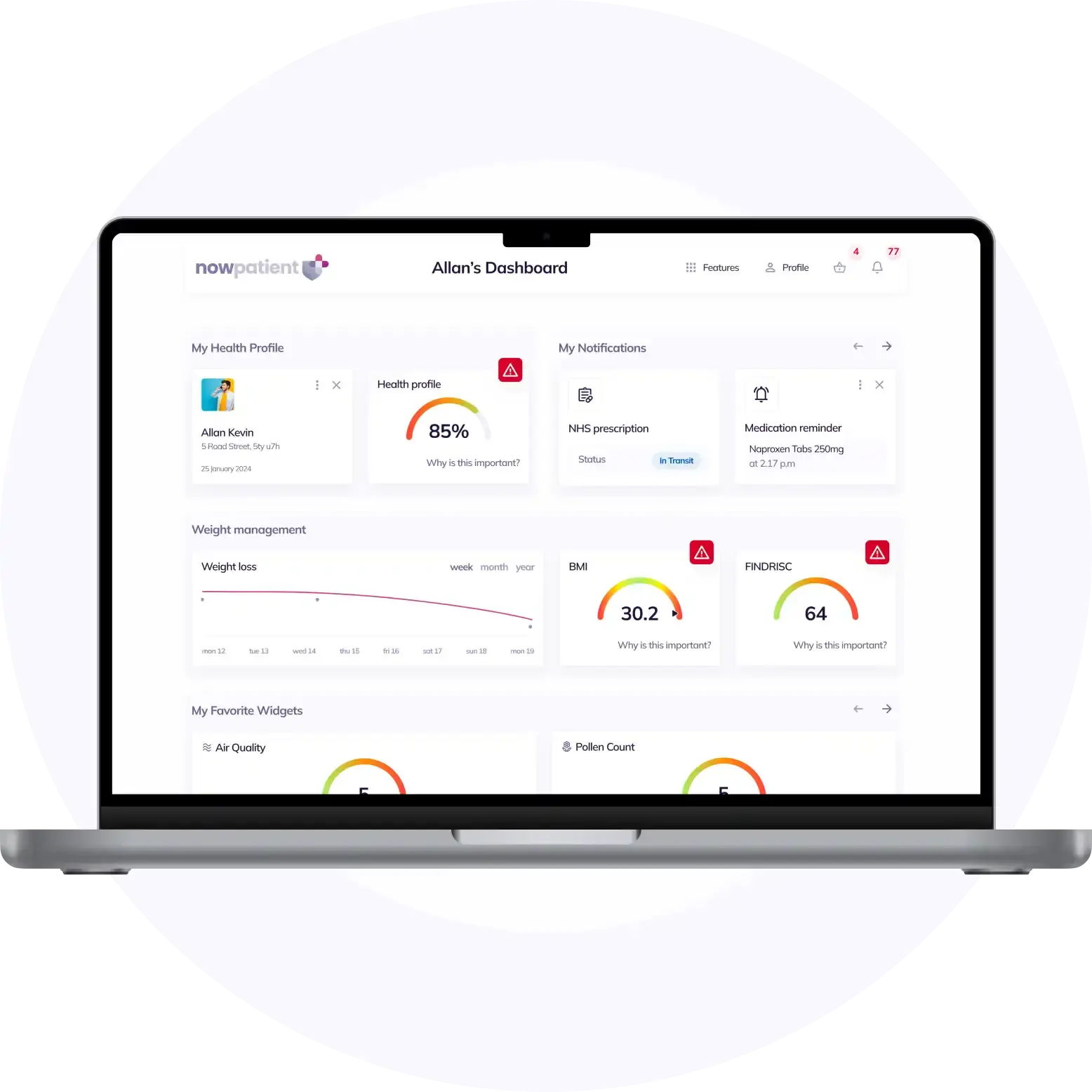Deep Vein Thrombosis
Treatments & Medications
Is the cost of your Deep Vein Thrombosis medication too expensive or unaffordable?
You may qualify for programs where you can pay as little as $0 per fill, subject to income and insurance status.
This content is intended for US audiences only

Thrombosis occurs when blood clots (thrombus) block the blood vessels. Deep vein thrombosis (DVT), also called venous thrombosis, is a serious medical condition characterized by the formation of blood clots in deep veins (leg veins), typically in the lower legs. Here, we aim to provide an overview of deep vein thrombosis, including its causes, symptoms, risk factors, diagnostic methods, and available treatment options.
What is deep vein thrombosis (DVT)?
Deep vein thrombosis refers to the formation of blood clots, or thrombi, in the deep veins, most commonly in the legs. These clots can partially or completely obstruct blood flow and pose the risk of complications if they dislodge and travel to other parts of the body, causing a pulmonary embolism (PE). PE, if not treated quickly, can be life threatening and is characterised by symptoms of a sharp or stabbing chest pain. Venous thromboembolism (VTE), which is defined as a condition that occurs when a blood clot forms in a vein, covers DVT and PE.
What are the Causes and risk factors of deep vein thrombosis?
Several factors contribute to the risk of DVT, including:
- Immobility for long periods of time (such as long-distance travel or bed rest)
- Injury or trauma to the veins
- Surgery or hospitalization
- Hormonal factors (such as pregnancy or contraceptive use)
- Obesity
- Age (risk increases with age)
- Inherited blood-clotting disorders
- Cancer and certain medical conditions
- Smoking and a sedentary lifestyle
- Varicose veins (although this is a weak risk factor)
- Taking combined hormonal birth control pills
- Taking Postmenopausal hormone replacement therapy
- Family history
- Increased risk with Heart failure
- Inflammatory bowel disease
What are the symptoms of deep vein thrombosis?
Deep vein thrombosis (DVT) may present with a range of symptoms, although some individuals with DVT may not experience any symptoms at all. The symptoms can vary depending on the location and extent of the clot. Common symptoms of DVT include:
Leg Pain
The most common symptom of DVT is pain in the affected leg. The pain can range from mild to severe and may feel like cramping or aching. It is often localized to the area of the clot and may worsen with movement or prolonged standing
Swelling
DVT can cause swelling in the affected leg, typically below the level of the clot. The swelling may be persistent and may make the leg feel heavy or tense. It is important to note that not all leg swelling is due to DVT, but sudden and unexplained swelling should be evaluated
Redness and Warmth
The skin over the affected area may appear reddish or have a warm sensation. The warmth is a result of increased blood flow, caused by inflammation in response to the clot.
Enlarged Veins
DVT can cause the veins in the affected leg to become more prominent or dilated. These enlarged veins may be visible as raised or cord-like structures beneath the skin
Tenderness
The area surrounding the clot may be tender to touch. Pressure on the affected area may elicit discomfort or pain
Discolouration
In some cases, the skin over the affected area may appear discolored. This can range from mild redness to bluish or purple discoloration
It is important to note that these symptoms may also be indicative of other conditions, such as muscle strains or cellulitis. However, if you experience these symptoms and suspect DVT, it is crucial to seek immediate medical attention for proper evaluation and diagnosis.
It is worth mentioning that in some cases, especially when the clot is small or located in a deep vein, the symptoms of DVT may be subtle or even absent. This is known as asymptomatic DVT. However, even asymptomatic DVT can lead to serious complications such as pulmonary embolism, so it is important to be aware of the risk factors and seek medical evaluation if there is a concern.
If you experience any persistent leg pain, swelling, or other symptoms suggestive of DVT, it is advisable to consult a healthcare provider for a proper evaluation/diagnosis and appropriate management.
How is deep vein thrombosis diagnosed?
To diagnose DVT, healthcare professionals employ various methods, including:
Physical examination
Assessing the affected leg for signs of swelling, redness, and tenderness
Doppler Ultrasound
Non-invasive imaging to visualize blood flow and detect the presence of blood clots
D-dimer test
This blood test measures the presence of a protein fragment released during the breakdown of blood clots
X-ray
venography using x-rays was used to diagnose DVT
What are the complications and prevention methods of deep vein thrombosis?
If left untreated, DVT can lead to serious complications, such as pulmonary embolism or post-thrombotic syndrome. Prevention strategies include:
- Staying active and avoiding prolonged immobility
- Regular exercise to promote healthy blood circulation
- Compression stockings to improve blood flow
- Medications, such as anticoagulants, to prevent clot formation
- Maintaining a healthy weight and lifestyle
What are the treatment options for deep vein thrombosis?
The treatment of deep vein thrombosis (DVT) aims to prevent the extension of the blood clot, reduce the risk of complications, and promote the resolution of the clot. The treatment approach typically involves a combination of anticoagulant therapy, supportive measures such as compression devices, and, in some cases, interventions to remove or dissolve the clot. The specific treatment options for DVT include:
Anticoagulant therapy
- Anticoagulant medications are the mainstay of DVT treatment. They work by inhibiting the clotting factors in the blood, preventing the formation of new clots and reducing the risk of clot extension
- The most commonly used anticoagulant medications for DVT treatment are heparin (administered intravenously or subcutaneously) and oral anticoagulants such as warfarin, direct oral anticoagulants (DOACs) like rivaroxaban, apixaban, edoxaban, or dabigatran etexilate
- The duration of anticoagulant therapy depends on various factors, including the patient’s individual risk profile and the presence of ongoing risk factors
Compression therapy
Compression stockings or bandages are commonly used to prevent or reduce swelling and improve blood flow in the affected limb. They exert pressure on the veins, helping to prevent blood pooling and clot formation.
Compression therapy can be used as an adjunct to anticoagulant therapy and may be continued even after the resolution of DVT to prevent the development of post-thrombotic syndrome.
Inferior vena cava (IVC) filters
- In certain cases where there is a contraindication to anticoagulant therapy or recurrent clotting despite adequate anticoagulation, an IVC filter may be placed
- An IVC filter is a small, cage-like device inserted into the inferior vena cava to trap blood clots and prevent them from reaching the lungs and causing pulmonary embolism
Catheter-directed thrombolysis
- Catheter-directed thrombolysis involves the use of a catheter to deliver clot-dissolving medications directly into the clot. This approach is used in selected cases where there is a high risk of complications or severe symptoms
- Thrombolysis can help dissolve the clot more rapidly and improve venous blood flow, reducing the risk of long-term complications
Thrombectomy
- Thrombectomy is a procedure in which a clot is physically removed from the affected vein. It may be considered in certain cases where there is a large clot burden, significant symptoms, or failure of conservative treatment
- Thrombectomy can be performed using various techniques, including surgical thrombectomy, mechanical thrombectomy with specialized devices, or pharmacomechanical thrombolysis
IVC filter retrieval
- If an IVC filter was placed initially, it is usually recommended to remove it once the risk of pulmonary embolism has decreased and the clot has resolved. IVC filter retrieval can be performed through a minimally invasive procedure to safely remove the filter
- It is important to note that the choice of treatment depends on the individual patient’s condition, including the location and extent of the clot, presence of comorbidities, and bleeding risks. The treatment plan is typically determined by a healthcare professional with expertise in managing DVT. Regular follow-up visits and monitoring are essential to assess treatment response, adjust therapy if needed, and prevent complications
What medications are used in deep vein thrombosis?
Unfractionated Heparin (UFH)
Given through intravenous (IV) infusion or subcutaneous injection
Low Molecular Weight Heparin (LMWH)
Injected subcutaneously. Examples include enoxaparin, dalteparin, and tinzaparin
Fondaparinux
Administered subcutaneously
Vitamin K Antagonists (VKA)
Examples include:
- warfarin
- acenocoumarol
- phenprocoumon
These oral medications require regular monitoring of international normalized ratio (INR) levels
Direct Oral Anticoagulants (DOACs)(blood thinners)
Examples include:
- rivaroxaban
- apixaban
- dabigatran etexilate
- edoxaban
These are taken orally and do not require routine monitoring of INR levels
Thrombin Inhibitors
Examples include:
- argatroban
- bivalirudin
These medications are used in specific situations such as heparin-induced thrombocytopenia (HIT)
Catheter-Directed Thrombolysis
In some cases, a thrombolytic medication such as alteplase may be delivered directly to the clot through a catheter to dissolve it
Inferior Vena Cava (IVC) Filters
In certain situations where anticoagulation therapy is contraindicated or ineffective, an IVC filter may be placed to catch blood clots and prevent them from reaching the lungs
What deep vein thrombosis support organizations are there available to support me in the UK?
- Thrombosis UK: Thrombosis UK is a national charity organization that focuses on raising awareness about thrombosis and providing support to individuals affected by thrombosis, including DVT. They offer information resources, patient support networks, educational events, and advocacy initiatives
- British Heart Foundation (BHF): The British Heart Foundation is a leading charity organization in the UK that supports individuals with various heart and circulatory conditions, including DVT. They provide information resources, helplines, support groups, and educational materials
- Anticoagulation UK: Anticoagulation UK is a charity organization that provides support, education, and resources for individuals on anticoagulation therapy, including those with DVT. They offer information materials, helplines, support forums, and awareness campaigns
What deep vein thrombosis support organizations are there available to support me in the US?
- National Blood Clot Alliance (NBCA): The National Blood Clot Alliance is a non-profit organization that focuses on raising awareness about blood clots, including DVT, and providing support to individuals affected by clotting disorders. They offer information resources, support groups, patient education programs, and advocacy initiatives
- American Heart Association (AHA): The American Heart Association is a national organization that supports individuals with various cardiovascular conditions, including DVT. They provide information resources, educational materials, support networks, and advocacy efforts
- Clot Connect: Clot Connect is an educational resource provided by the University of North Carolina (UNC) Blood Research Center. They offer information on blood clotting disorders, including DVT, as well as guidance on prevention, treatment, and management
- Centers for Disease Control and Prevention (CDC): The CDC is a national public health agency that provides information and resources on various health conditions, including DVT. Their website offers educational materials, prevention strategies, and treatment guidelines for DVT
Summary
Deep vein thrombosis is a serious condition that requires prompt diagnosis and treatment to prevent complications. Awareness of the risk factors, recognition of symptoms, and early medical intervention are crucial. If you experience any symptoms or suspect you may have DVT, seek immediate medical attention. Healthcare professionals can provide a thorough evaluation, accurate diagnosis, and appropriate treatment to effectively manage DVT and reduce the risk of complications.
Medical Disclaimer
NowPatient has taken all reasonable steps to ensure that all material is factually accurate, complete, and current. However, the knowledge and experience of a qualified healthcare professional should always be sought after instead of using the information in this page. Before taking any drug, you should always speak to your doctor or another qualified healthcare provider.
The information provided here about medications is subject to change and is not meant to include all uses, precautions, warnings, directions, drug interactions, allergic reactions, or negative effects. The absence of warnings or other information for a particular medication does not imply that the medication or medication combination is appropriate for all patients or for all possible purposes.
What is NowPatient
Telehealth and Online Pharmacy
NowPatient is a licensed online pharmacy and doctor service that is available around the world. Our service is FREE and packed with valuable features that can benefit your health such as medication reminders, educational blogs, medically approved symptoms checker, UK NHS online pharmacy, private treatment plans, Rx Advantage card, health conditions information, affordable medications options, genetic testing, home test kits, health risks, pollen meter, air quality monitor, weight loss plans, drug savings programs and lots more!

WHY WE BUILT NOWPATIENT
To improve the lives of everyone by making high-quality care accessible and convenient
We are here to improve lives. Our service gives you access to smart features and resources that can help empower you to take control of your health and improve your health outcomes. All this, in one place, for FREE. We strive to bring a fresh perspective to managing health. NowPatient can be accessed by downloading the App or using your web browser.
Download our app today

Can I trust NowPatient
Meet our medical team
We are a passionate group of clinicians and medical writers covering a broad range of specialities with experience operating in health systems in the United Kingdom & United States. Providing excellent care and advice is at the heart of everything we do. You can read more about our medical team by visiting the medical team page or learn more about how we curate content by visiting our editorial process